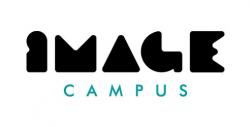
What Does a Color Key Artist Do? Where Do Color Key Artists Work? ACR Takes a Look.
| College | City | State |
|---|---|---|
| Brigham Young University | Provo | Utah |
| California Baptist University | Riverside | California |
| California State University Fullerton | Fullerton | California |
| Columbia College Chicago | Chicago | Illinois |
| George Washington University | Washington | DC |
| Indiana University South Bend | South Bend | Indiana |
| Massachusetts College of Art and Design | Boston | Massachusetts |
| Montclair State University | Montclair | New Jersey |
| Pace University | New York | New York |
| Rochester Institute of Technology | Rochester | New York |
| San Jose State University | San Jose | California |
| Savannah College of Art and Design | Savannah | Georgia |
| University of Southern California | Los Angeles | California |
| Washington University-St. Louis | St. Louis | Missouri |
| Watkins College of Art | Nashville | Tennessee |
| Westfield State University | Westfield | Massachusetts |
What Does a Color Key Artist Do?
Color key artists create background paintings and color keys that lighting, materials, and production teams use for animated features, television series, and animated shorts. They have a sharp eye for color along with advanced software skills. Color key artists may use programs such as Adobe Illustrator and Photoshop for color styling.
In the animation or game design industry, color key artists develop color schemes in animations, they paint and design animation backgrounds, and they work with technical directors on light rigging. Also called “background painters” or “look development painters,” color key artists create color schemes that are appropriate for different lighting situations such as “at night’ or “underwater.”
A typical job with an animation or game studio may require painting/rendering color keys for animations along with expertise in industry software programs such as Adobe Illustrator and Photoshop.
Where Do Color Key Artists Work?
Like background painters, color key artists work in a variety of environments such as animation, film and video production, and game design studios as well as graphic design, web design, and advertising firms.
What is the Job Outlook for Color Key Artists?
The Bureau of Labor Statistics (BLS) reports employment for fine artists as a major group. This includes illustrators, painters, and sculptors. Employment for this group is expected to grow 6% for the 2016-2026 decade, which is as fast as average for all occupations. This will add 3,100 positions to the current (salaried) workforce of around 53,400 artists. Color key artists working in the animation industry will enjoy employment growth thanks to increased demand for animation and visual effects in video games, movies, and television.
The BLS reports that consumers will continue to demand more realistic video games, movie and television special effects, and three-dimensional movies. This will create demand for newer computer hardware, which will enhance the complexity of animation and visual effects. Additional color key artists and animators will be required to meet this increased demand.
Other Schools to Consider:
- Winter Park, FL & Online
- Top 50 Nationally for Animation (#14) - 2024
- Top 50 Nationally for Game Design (#12) - 2024
- Top 50 Nationally for Graphic Design (#36) - 2024
- Online
- Top 50 Private Graphic Design Schools in the US (#46) - 2024
- Buenos Aires, Argentina & Online
- Desarrollo de Videojuegos (Tecnicaturas Superiores)
- Producción y Game Design (Tecnicaturas Superiores)
- Arte y Animación para Videojuegos (Tecnicaturas Superiores)
- Producción y Animación 3D (Tecnicaturas Superiores)
- Realización Integral de Dibujos Animados (Tecnicaturas Superiores)
- Tecnicatura Superior en Animación 3D para Videojuegos (Tecnicaturas Superiores) - NUEVA - ONLINE
- Programación de Videojuegos con Unreal, Unity y Godot (Tecnicaturas Superiores) - NUEVA - ONLINE
- Unreal Connectors (Programas Profesionales - 100% Online en Vivo)
- Virtual Production (Programas Profesionales - 100% Online en Vivo)
- Introducción a Unreal Engine (Programas Profesionales - 100% Online en Vivo)
- Diseño de Interacción 3D en Realidad Virtual con Unreal Engine (Programas Profesionales - 100% Online en Vivo)
- Realidad Aumentada con Unity (Programas Profesionales - 100% Online en Vivo)
- Realidad Virtual para Arquitectura (Programas Profesionales - 100% Online en Vivo)
- Audio Inmersivo (Programas Profesionales - 100% Online en Vivo)
- Animación Profesional 3D (Programas Profesionales - 100% Online en Vivo)
- Modelado Profesional 3D (Programas Profesionales - 100% Online en Vivo)
- Visualización Arquitectónica (Programas Profesionales - 100% Online en Vivo)
- Motion Graphics (Programas Profesionales - 100% Online en Vivo)
- VFX (Programas Profesionales - 100% Online en Vivo)
- Environments para Videojuegos con Unreal Engine (Programas Profesionales - 100% Online en Vivo)
- Desarrollo de Videojuegos con Unity (Programas Profesionales - 100% Online en Vivo)
- Game Design (Programas Profesionales - 100% Online en Vivo)
- Concept Art (Programas Profesionales - 100% Online en Vivo)
- Game Art (Programas Profesionales - 100% Online en Vivo)
- Game Audio (Programas Profesionales - 100% Online en Vivo)
- Game Quality Analyst (Programas Profesionales - 100% Online en Vivo)
- Top 25 International Animation Schools - 2024 (#23)
- Online
- Top 25 International Animation Training Programs (#18) - 2024
- Online
- Online Bachelor of Science in User Experience
- Online Master of Science in User Experience
- Online Bachelor of Science in Design in Graphic Design
- Online Bachelor of Science in Graphic Information Technology – Full-Stack Web Development
- Online Bachelor of Science in Graphic Information Technology – User Experience
How Much Do Color Key Artists Make?
The median annual wage for fine artists is $48,960 . The lowest 10% earn less than $22,020, and the highest 10% earn more than $101,400. For color key artists working in the animation industry, note that multimedia artists and animators average $72,520. The lowest 10% earn less than $40,870, and the highest 10% earn more than $124,310. Color key artists working in the animation industry can expect their salaries to fall somewhere in between fine artists and animators.
In addition to industry, salaries will vary based on geographic location, type and size of company, and many other factors. For example, the highest paying states for fine artists are:
- Connecticut - $80,010
- California - $76,230
- Oklahoma - $65,140
- New Jersey - $62,840
- Arizona - $62,200
Some of the lowest paying states are Arkansas ($24,510), South Carolina ($28,070), Montana ($31,150), New Mexico ($35,110), and Missouri ($39,430).
The top paying industries for fine artists are:
- Computer Systems Design and Related Services - $88,100
- Architectural, Engineering, and Related Services - $86,700
- Aerospace Product and Parts Manufacturing - $81,630
- Motion Picture and Video Industries - $80,320
- and Related Services - $72,250
Salaries for the top five industries with the highest levels of employment for fine artists are:
- Independent Artists, Writers, and Performers - $52,200
- Motion Picture and Video Industries – 80,320
- Other Miscellaneous Store Retailers - $46,780
- Colleges, Universities, and Professional Schools - $57,890
- Newspaper, Periodical, Book, and Directory Publishers - Not Reported
How Do I Become a Color Key Artist?
Most top employers of color key artists prefer a bachelor’s degree or higher in areas such as illustration, drawing & painting, animation, fine art, or industrial design. Many animation production studios also require three to five years’ experience in the industry along with highly developed illustration skills with an emphasis on imaginative lighting, creating mood, and supporting character action within the scene.
Take a look at the following job posting by Lucasfilm Animation seeking a color key artist:
Education/Experience:
- Bachelor's degree in Illustration or 3-5 years equivalent experience.
- Experience or knowledge of cinematic techniques, language and shot composition desired.
Required Skills / Competencies:
- Proficiency in Photoshop required.
- Strong character/environments concept drawing skills a must.
- Highly proficient at rendering imaginary scenes with little or no reference.
- Experience working with high-end 3D tools desired.
Preferred Skills / Competencies:
3D knowledge of lighting in Maya and an understanding of Nuke compositing.
To gain valuable experience in the field, aspiring color key artists should consider an internship and/or working part-time as an assistant or in another support position at an animation production studio or gaming company. To enhance employment opportunities, some aspiring color key artists may also opt for an advanced degree. Fortunately, in addition to undergraduate programs, most colleges and universities offer MFA programs in a range of art and design fields. Some even offer PhD programs.
What are Some Top Schools for Color Key Artists?
Just a few top programs for aspiring color key artists include:
- Brigham Young University, BFA Illustration
- California Baptist University, BA, Minor Illustration
- California State University Fullerton, BFA Art, Drawing and Painting
- Columbia College Chicago, BA, BFA Illustration (drawing, painting, cartooning, typography, digital illustration, figure drawing)
- George Washington University, Corcoran School of the Arts & Design, BA, BFA, Dual Degree, Minor Fine Art
- Indiana University South Bend, BFA Drawing and Painting
- Massachusetts College of Art and Design, BFA Industrial Design
- Montclair State University, BFA Animation/Illustration
- Pace University, BA Art with Digital Media, (Animation, Illustration, Graphic Design, Web Design, 3D Design)
- Rochester Institute of Technology (RIT), BFA, MFA Industrial Design
- San Jose State University, BA Design Studies (Animation/Illustration Area)
- Savannah College of Art and Design (SCAD), BA, BFA, MA, MFA Illustration with a Minor in Illustration for Entertainment or Animated Illustration and Publication Design; BA, BFA, MA, MFA Sequential Art; BFA, MFA Industrial Design
- University of Southern California, BFA Studio (with 24 units of Fine Arts electives)
- Washington University-St. Louis, Sam Fox School of Design and Visual Arts, BFA, Emphasis in Illustration, Interaction Design
- Watkins College of Art, BFA Illustration
- Westfield State University, BA Illustration, Animation
In addition to RIT and SCAD, schools such as DePaul University, Maryland Institute College of Art (MICA), Memphis College of Art (MCA), New York Film Academy (NYFA), Oregon College of Art and Craft (OCAC), Pennsylvania Academy of Fine Arts (PAFA), Syracuse University, and the College of Visual and Performing Arts (CVPA) at UMass Dartmouth offer graduate programs in fine art, illustration, drawing, industrial design, and/or animation.
Awesome Animation Fact: It wasn’t easy making the brilliantly blue and purple spotted monster in Monsters, Inc. pop. There are 2,320,413 individually animated hairs on the most celebrated monster in Monstropolis—Sully. It took 11 to 12 hours to animate a single frame featuring the monster. Fortunately, all of the hard work paid off. Monsters, Inc. was nominated for an Oscar for Best Animated Feature and it went on to win more than a dozen industry awards.




